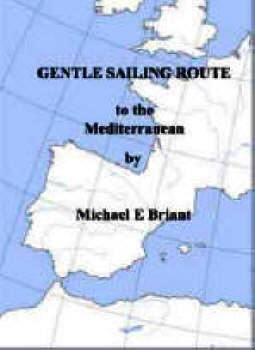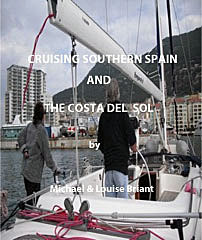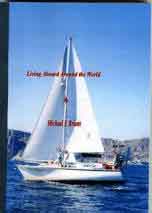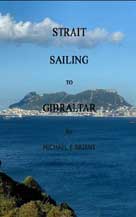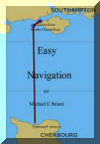|
Medical Page
|
before you go any further with this page I am NOT
a doctor and if any doctor reads the following and thinks I am wrong or have
given bad advice please
email me
and tell me how to change the item
The intention of this page is to list the medical
equipment I carry when going off shore for more than a few days.
IT IS NOT A SUBSTITUTE FOR FINDING PROPER
MEDICAL ASSISTANCE BUT IF YOU ARE DAYS OR WEEKS AWAY FROM A LANDFALL THE
FOLLOWING MAY BE HELPFUL.
The most useful reference book I have found is the Ship's Captain's Medical Guide
Written for laymen in simple - sensible
language. It is the book carried by most UK flagged merchant ships and if you do
have a problem then it may well be possible to discuss this by radio with a
British ship's doctor referring to specific pages and diagrams etc.
It is not cheap at around £30 but really worth while and should
last for years/ever. How to administer drugs, sew up wounds, get out fish hooks
and stacks of diagnostic help. Ship's Captain's Medical Guide
link will get you to the MCA Coastguard web site and the medical page. In
the web site you can find all the contents of the book and use it as a method of
diagnosis.
KEEPING AWAKE AT NIGHT
To help you keep awake during long lonely night watches there is a non
prescription drug PROVIGIL which will help keep you alert and vigilant. It is
non addictive so is pretty safe to use.
What is PROVIGIL?
PROVIGIL is a unique
wake-promoting agent that is indicated to improve wakefulness in patients with
excessive sleepiness (ES) associated with narcolepsy, obstructive sleep apnea/hypopnea
syndrome (OSAHS), or shift work sleep disorder (SWSD).6
In OSAHS, PROVIGIL is indicated as an adjunct to standard treatment(s) for the
underlying obstruction.
|
|
IMPACT INJURIES
The most serious problem, frequently encountered, are
impact injuries caused by falling or getting hit by something - booms -
winch handles - I have had it on my boat and met
other boats that have encountered the same injury. Frequently to the
head. If you have big, deep, open wounds that need fastening together you
need:-
1)A good supply of surgical gloves - infection is dangerous and
keeping wounds clean and sterile vital
2) A quantity of butterfly closure or Steri-Strip skin closures
- in small, medium & large (really easy to use)
3) A quantity of suture needles
4) A quantity of sterile packed sutures
5) A quantity of LIDOCAINE HYDROCHLORIDE
aesthetic for
subcutaneous injection. PRESCRIPTION ONLY.
6) Quantity of throw away hypodermic syringes with needles attached
7) Spencer Wells forceps with serrated teeth (to hold needle and
sew with)
8) Toothed dissecting forceps (for helping with sewing)
9) pack of throwaway sterile scissors to cut sutures.
10) couple of cheap throwaway scalpels
11) Bactroban - MUPIROCIN - prescription ointment to put
on sutured wounds
12) Big bottle Dettol or similar to wash hands and try to keep
things sterile
13) Pack(s) of Sterile gauze swabs to clean wound area
14)Pack(s) of self adhesive surgical wound dressings
15) Roll(s) of impermeable plastic surgical adhesive tape
16) Small, Medium and large sterile wound dressings.
17) Large triangular bandage
18) Assorted bandages in clean packs.
19) 1 inflatable splint for arm (I do not bother with leg
because if I broke that I would not be moving or changing sail)
20) Finger splint - plastic 21) anti Malaria
tablets - I carried them on board before entering possible malaria areas - it's
important to do one's best to avoid getting bitten in the first place - I have
known a lot of crew in yachts contract dengue fever. 22) From
Army surplus stores - British Army field dressings - when the boat is bouncing
around and someone has a wound - they are designed for that sort of situation.
|
|
Pain killers - Drugs etc 22)
Aspirin, Paracetamol, Dihydrocodeine - Prescription, top
pain killer, is diamorphine but is a class A drug and could present
problems. You could consider Oramorph which, despite
being morphine sulphate, is not actually treated as a Controlled Drug in the UK
- and has the benefit of not needing to be injected. 23)
Oil of Cloves -tooth ache - 24) I also carry a proprietary
little dental kit with mirror, spatula and cavity filling paste 25)
Amoxicillin - Doxcycl hyc - Metronidazole - all prescription
penicillin for tooth ulcers - talk to your dentist...for prescription. (I suffer
from this when stressed or over tired so I carry the cure) * see section
Tooth problems below. 26) A
quantity of AMOXICILLIN which is a broad spectrum anti-biotic - Prescription
only - talk to your Doctor. 27) Stugeron - anti sea
sickness tablets - for crew. 28) Imodium - diarrhea
treatment 29) Ceralyte or Dioralyte to prevent or
correct dehydration caused by diarrhea or sea sickness 30) Senokot
A laxative 31) Eye wash glass 32) Thermometer 33)
Some large waterproof adhesive stick on plasters as used in hospitals. e.g.
3" X 3" 34) The normal bunch of waterproof sticking
plasters - and rolls of waterproof tape - very useful for plasters and wound
dressings 35) Skin healing cream like SAVLON 36)
Sunburn cooling cream - Alovera - any proprietary sun burn cream - very
useful.... 37) Burn cream 39) I purchased a home
blood pressure kit.... £25.50 I have never used it - It comes with 10
language instruction, built in stethoscope and gauge - could be useful.......... 40)
A lot of American boats carry a portable defibrillator designed for amateur use
with on screen instructions etc - cost US$2199 if you cannot find one in the UK
have a look at the West Marine catalogue - I do not have one on board. |
| Most
of my first aid kit is designed to keep me sailing to the next port even its
several days away - With the aid of the Ship Captain's Medical Book you stand a
chance of keeping going - I think impact injuries are the most challenging -
lots of blood, flaps of skin hanging around and bits of bone sited though the
gore. These do need to be dealt with and as they will probably occur when
its windy and lumpy. Big wound dressings (Army surplus?)are necessary until it all quietens down
and you can start sewing. Keeping it all clean is a real problem and the
antibiotics will help I guess. The next most difficult is infections that can
make you very very ill - unable to operate your boat and I suspect antibiotics
are the solution to this - but do try to get informed opinions about the drugs I
have mentioned or suggested. Things move fast and change in the medical
world. |



SPECIALIST YACHT SOLUTIONS
L. E. West Ltd is a leading supplier of pharmaceuticals,
surgical/ medical equipment, medical consumables and first-aid supplies
to the maritime community worldwide.Our services are aimed at providing
total medical and pharmaceutical supply solutions to a global client
base. Working constantly to fulfill our customers’ needs, we have built
our business on foundations of professionalism, competitive prices and
reliable delivery. With a wealth of experience and backed by adedicated
team of UK Pharmacists, L.E.West has gained a world-class reputation for
expertise, service and commitmentin this specialist field.
Complete Medical Kits for Every Class of Vessel
Whether you’re stocking a small sailing yacht or a
worldwide super cruiser, whether the vessel is crewed by friends and
family or run as a commercial enterprise, L. E. West can provide you
with the advice and supplies to help prepare your vessel for every
regulation and medical contingency.Depending on destination, order size
and level of urgency, orders can normally be dispatched
within 24 hours
using the most economical and reliable
methods available. Regardless of size or geographical location, all
L.E.West customers benefitfrom our unique combination of logistical
skill and personal attention.
Over 2500 products online!
20,000 products in inventory! www.le-west.co.uk |
|
There is an excellent web site - mail
order' from where you can order all diagnostic equipment, bandages and
everything else except drugs at
http://www.spservices.co.uk
All at professional prices - almost
wholesale. |
|
Really Serious Tooth Problems With
thanks to Sophy for her advice and input 'teeth abscesses'
These are either lateral periodontal abscesses, or periapical abscesses.
Lateral perio. abscess: It is an infection up the side of the
tooth, with
the microbes invading from the mouth up the side of the root.
Diagnosis: Pain described as throbbing, sore, can be
associated with bad
taste in mouth. Pain tends to be around the side of the tooth. Can be
around a couple of teeth next to each other. Comes and goes over weeks and
months. Can appear when you are immunosuppressed and run-down.
Treatment: Local: Scaling around teeth, regular hygiene
treatment with
hygienist, Corsodyl(0.2% chlorhexidine gluconate mouthwash daily), in
severe cases antibiotics, usually combined broad spectrum penicillin based
and an antibiotic suitable from anaerobic bacteria such as metronidazole.
Periapical abscess: Is an infection of the inside of the
tooth, the
pulp chamber, usually caused by decay in the tooth, which spreads microbes
down the nerve channel in the tooth and causes pain and infection around the
end of the root in the jaw.
Diagnosis: throbbing, pain with heat and hot drinks etc. ,
pain with
biting, sometimes facial swelling next to infected tooth. Patient can feel
very unwell, and get raised temperature.
Treatment : drain abscess surgically if possible, extract tooth, or as a
temporary measure, antibiotics to control the infection until the former two
treatments may be carried out. (tooth can sometimes be kept by having the
nerve channel disinfected and filled up: called root canal treatment)
|
My kit was put together with the
aid and advice of a Doctor friend who had been a Cruise Liner ships doc caring
for several thousand people in one big floating hotel with a high percentage of
retired and unfit people... Things like a tooth ulcers have always plagued
me when tired or stressed so I got my dentist to prescribe extra for me to take
with me.. Remember once you are out of UK - French waters many pharmacists will
sell you drugs provided you know what to ask for and normally far cheaper than
at home. I recommend you buy the book - consider your health
circumstances and then make a list - the Street behind Selfridges in London has
several medical supply shops that sell everything I have listed above.
When you are buying medical supplies from a medical supply source it appears to
be a lot cheaper than going to Boots for example. I ended up with a small
holdall full of gear - can't remember how much it all cost but at a guess around
£100 - £150 plus the cost of the prescription drugs. I have
never regretted the money I spent on my extensive first aid kit - I have used
most items from it at some time. The only thing to remember is that the
hard part is diagnosis - it is very difficult and best left to experts - Doctors
- but if you must then remember that the SSB nets will nearly always have a
doctor amongst the contributors and someone will have a sat phone to talk to a
hospital to get you advice. Whilst I believe we go out cruising at our own risk
and cannot require people to rescue us there is no harm in asking for help and
if it is forthcoming accepting it. That is one of the great joys of the
cruising community. I have had some feed back from Medical people/Doctors on this page and their unedited
notes are as follows On
a sailing forum the following was posted:- Do
you not carry a cephalosporin drug (3rd generation) and the catch all for the
moment Ciprofloxicin, both in 250mg and 500mg strengths? Might you include
Conn Current Therapy International Edition, which is updated every 2 years and a
concern for carrying drugs for people who are allergic to penicillin.
I think these items and all my drug suggestions should be discussed with
a medical doctor - your GP if he has time - You will need a prescription
anyway if you buy in the UK - on the internet (but be careful!) and Spain
I know they are all available off the shelf without prescription. Another route
for info is to use a yachting forum like the ones at
http://www.yachtingmonthly.co.uk/ym/home From
another Doctor on the sailing forum came:- your list states
lidocaine for subcut AND intravenous use. intravenous use is dangerous. as as anesthetic
this drug should be given sub-cutaneously - always draw back before injecting to
make sure you are not in a blood vessel. Some preparations are mixed with
adrenaline .this reduces bleeding and is very useful but must not be injected
into an area with a limited bloods supply such as a finger because it may cause
arterial spasm and dangerously reduce the blood supply to the finger. May I also
suggest this lidocaine gel may be useful as a topical application. Also remember
that when you inject you may occasionally produce an allergic reaction so give
slowly. it might be worth having an injectible antihistamine such as piriton on
board remember the article on killer bees in the Caribbean. I
would also suggest antibiotic eye-drops such as chloramphenicol, rehydration
powders such as diaoralyte.last year at the Southampton Boat Show. A saline
spray for irrigation [eyes wounds was demonstrated and seemed a good idea]. Many
of us cruisers are getting older and perhaps a urinary catheter might be a good
idea if going far heaven forbid urinary retention in mid Atlantic]. As regards
dressings, sanitary towels /nappies are very useful- very absorbent and cheap
also readily available. Many dressings kits are very expensive for what they are. you
can easily tear up a shirt if you really need triangular bandages. Steristrips essential- I remember trying to suture my own gashed leg whilst
single handing in Biscay. Finally prevention is the name of the game. plan
ahead regarding immunizations. carry the appropriate malaria prophylaxis for
your area don't rely on chloroquine. In the tropics you will possible come
across infections outside my experience but probably worth having an
antehelminthic for treating worms /larvea such as vermox
From
Jan & Kate:
one of the best ‘layman’s dressings’ for the
beginner is the British army’s ‘first field dressing’.
Available from army surplus stores, this is a waterproof sealed package,
about the size of a fat squidgy pack of cards…The
wrapping opens to reveal a sterile gauze dressing, a number of economy sized
safety pins, and is itself designed to be used as a means of fixing the dressing
in position, with 2 long straps that unroll.
It
is designed to be ripped open, stuffed on a deep, messy, bleeding wound, and
bound in place with the straps. In
extremis, the waterproof wrapping will also seal a sucking chest wound (eg
one in which a collapsing lung is venting to the air, so that when you try to
breathe in, you suck air into the useless lung through the wound).
Excellent piece of kit, well worth carrying for all
those puncture/pierce/abrasion wounds.
Best used with a sprinkle of antibiotic powder if there’s time.
                                      
|





